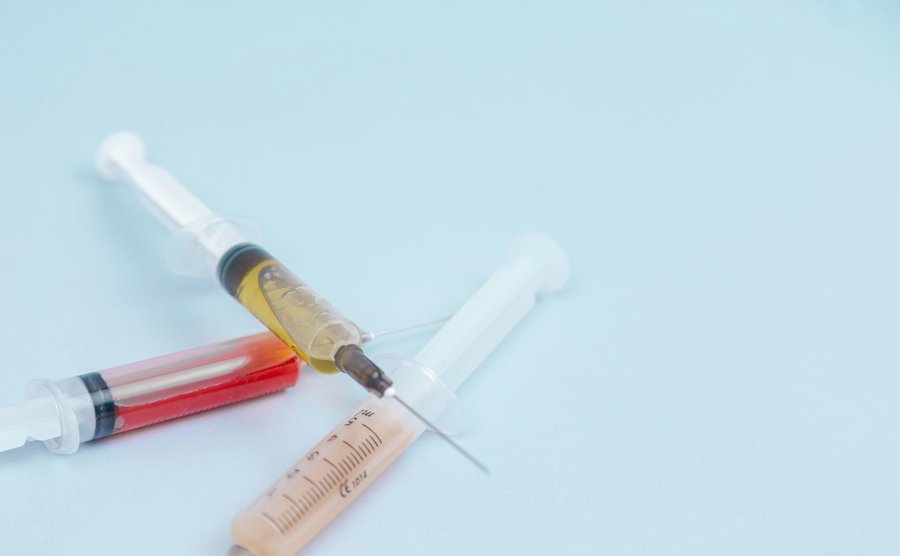What is HIV?
HIV (Human Immunodeficiency Virus) is a virus that attacks the immune system, in particular the CD4+ T cells, which play a central role in immune defense. The loss of these cells leads to a progressive immunodeficiency that, if left untreated, can develop into AIDS (Acquired Immune Deficiency Syndrome). HIV is transmitted primarily through the exchange of bodily fluids such as blood, semen, vaginal secretions, and breast milk. Effective protection against HIV infection includes the use of condoms, reducing needle and syringe sharing, taking pre-exposure prophylaxis (PrEP), and education about safe sex practices. These measures aim to minimize the risk of transmission, as there is currently no cure for HIV. Of particular interest is the gene CCR5-delta-32, a genetic mutation that confers resistance to HIV. This mutation results in the CCR5 protein, which serves as a cofactor for the virus to enter host cells, not being expressed properly. People who are homozygous for this mutation, i.e. who carry the mutation on both chromosomes, are largely resistant to HIV infection. This discovery has significantly influenced our understanding of HIV resistance and the development of new therapies. Despite significant advances in research, HIV remains a global challenge, particularly in terms of prevention and treatment. However, understanding the underlying biological mechanisms and genetic factors is opening up new ways to control the spread of the virus and possibly one day find a cure.
HIV transmission routes and risk factors
HIV is transmitted primarily through the exchange of infected bodily fluids, with blood, semen, vaginal fluid and breast milk being the most important transmitters. The most common route of infection is unprotected sexual intercourse, in which the virus enters the bloodstream through micro-tears in the mucous membranes. Sharing of injection needles also leads to direct contact with infected blood, which is a very efficient way of transmitting HIV. Vertical transmission from mother to child can occur during pregnancy, childbirth or breastfeeding.

Good to know
People with a double CCR5 delta 32 mutation are largely resistant to HIV, as the virus cannot enter immune cells without a functional CCR5 protein. This mutation is particularly common in people of Northern European descent.
Strategies for reducing HIV infection rates
The most effective strategy for containing HIV infections is prevention. Regular HIV testing, especially among at-risk groups, helps to detect the virus early and contain its spread. Using condoms during sexual intercourse prevents direct contact with infected bodily fluids. In addition, pre-exposure prophylaxis (PrEP) plays a crucial role in protecting against HIV. PrEP is a drug treatment that, when taken regularly, significantly reduces the risk of HIV infection. In addition, educational programs help to raise risk awareness and promote safe behavior.
Importance of CCR5-Delta-32 for the development of new therapies
The discovery of the CCR5-Delta-32 mutation has contributed significantly to the development of new therapeutic approaches. This mutation renders the CCR5 protein, which HIV needs to enter host cells, non-functional. This prevents the virus from multiplying and thus offers protection against HIV infection. Based on this, strategies are being developed to specifically block the function of the CCR5 receptor and thus prevent the spread of HIV. These findings promote the development of innovative approaches to the treatment and prevention of HIV.
What does genetics have to do with it?
The single nucleotide polymorphism (SNP) rs333 in the CCR5 gene is strongly associated with protection against HIV infection. This SNP represents the CCR5 delta-32 mutation, a specific deletion of 32 base pairs in the CCR5 gene, which codes for a surface protein on certain immune cells. This protein, the CCR5 receptor, plays a crucial role in HIV infection, as the virus uses this receptor as a portal of entry to enter and multiply in the cells.
The CCR5 delta 32 mutation results in a truncated, nonfunctional CCR5 protein. In people who are homozygous for this mutation, i.e. who carry two copies of the mutated gene variant, there is a complete absence of functional CCR5 protein on the cell surface. Without this functional CCR5 protein, the most common HIV strains find it almost impossible to enter the target cells, making these individuals largely resistant to HIV infection.
Heterozygous carriers of the mutation, who have one mutated and one normal copy of the gene, have a reduced number of functional CCR5 receptors. These individuals are not fully resistant to HIV, but if infected, they show a delayed progression of the disease. This is because HIV has fewer receptors available to enter the cells and replicate.
![[Report Bild]](/static/reportImages/aids.jpg)